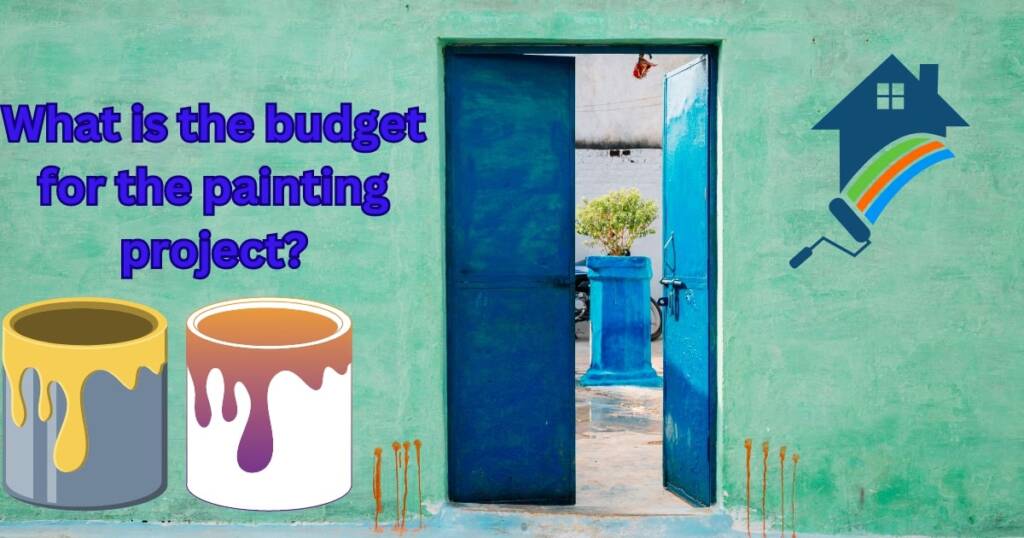Before commencing began a home exterior painting operation, it is vital to ask yourself a few key questions. First, check the state of the current outside surface, seeking for any cracks, peeling paint, or evidence of damage that may require repair before painting. Second, select the suitable sort of paint for the specific outdoor surface, considering characteristics such as the material (wood, stucco, and brick) and any essential primers or application techniques. Third, define the correct color scheme or style, encompassing personal inclinations and the overall aesthetic you aim to reach.
Fourth, develop a budget for the job, taking into consideration expenses for supplies, labor, and any additional services or repairs. Finally, determine if you need to get any licenses or comply with local limits before continuing. By addressing these challenges early, you may achieve a well-planned and productive home exterior painting task.
What is the status of the existing outer surface?
Before embarking on a home exterior painting task, it is necessary to examine the condition of the current external surface. This evaluation helps establish the surface’s condition and identify any problems that might impact the painting process and the eventual outcome. Careful examination allows for the detection of cracks, peeling paint, or indicators of deterioration such as rot or decay.
It is also vital to inspect the surface for any underlying problems like water damage or structural challenges that can impact the lifespan and look of the paint. By correctly analyzing the present condition of the outer surface, needed repairs or preparatory work may be identified and completed, insuring a successful and long-lasting paint job.

What form of paint is excellent for the exterior surface?
Choosing the suitable sort of paint for the Home Exterior Painting surface is vital to obtain an effective and long-lasting finish. The application of the paint relies on the nature of the outer surface, such as wood, stucco, brick, or other substrates. Each material has its unique properties and requires particular paint recipes for best performance. For example, wood surfaces may benefit from coatings that offer weather and UV protection, but stucco would require a porous and flexible covering to facilitate its movement.
Additionally, some surfaces may demand the use of primers or specialised paints to overcome unique hurdles like stains or adhesion concerns. It is crucial to thoroughly study and choose a paint sort that is suited for the particular outdoor surface to ensure adequate adhesion, durability, and protection against weather conditions. Consulting with paint pros or experts may provide valuable advice in selecting the best suited paint for your specific outside surface.
What is the optimal color scheme or aesthetic?
Determining the suitable color scheme or style is a critical step before commencing a home exterior painting task. It requires pondering the overall style and feel you want to achieve for your home’s exterior. Are you looking for a traditional, contemporary, or rustic appearance? Do you enjoy loud, brilliant hues or more subtle and neutral tones? The color palette should suit the architectural style of your property and mix with the surrounding environment.
You may opt to preserve the present hue, fully modify it, or refresh the existing color with a new shade. Researching numerous color palettes and obtaining inspiration from other design sources can help you make an informed selection. It is also crucial to research any homeowner association restrictions or municipal legislation that may effect your color decisions. By selecting your desired color scheme or aesthetic, you may swiftly design and execute a painting project that boosts the overall curb appeal and reflects your individual style.

What is the budget for the painting project?
Establishing a budget for your painting work is a key step in the planning process. It comprises determining the amount of money you are prepared to pay for the full project, including materials, labor, and any additional expenses. Factors that could affect the budget include the size of your property, the intricacy of the painting job, the quality of materials you chose, and any additional services or repairs required.
Researching the cost of materials and getting estimates from skilled painters can help you determine the expenses necessary. It’s also a good idea to set aside a contingency fund for any unanticipated costs that may occur during the project. By establishing a reasonable budget, you can assure that you have the money to do the painting project professionally without any financial strain.
Establishing a budget for the painting work is a critical step in planning and executing a home exterior painting project. It comprises selecting the amount of money you are prepared to pay for the full project, including materials, labor, and any additional services or eventualities. Factors that could affect the budget include the size of the home, the complexity of the surface, the desired quality of paint, and any needed repairs or preparatory work.
Researching the cost of materials and collecting estimates from skilled painters can help you estimate the prices necessary. It’s also vital to research any cost-saving measures or alternatives, such as performing specific operations oneself or choosing for more cheap paint selections, without losing on quality. By generating a realistic budget, you can assure that the project is financially viable and make smart decisions throughout the process.

Do you need to seek any licenses or comply with local regulations?
Before undertaking a home exterior painting task, it’s vital to check about any permissions or municipal restrictions that may apply. Depending on your location, there might be particular restrictions or standards preventing exterior improvements to houses, especially in historic areas or communities with architectural limits. Some regions require seeking permissions before doing any big alterations to the exterior, including painting. To assure compliance, it is vital to contact your local authorities or homeowner association and inquire about any needed permits or restrictions connected to your painting task.
By doing so, you may avoid any penalties or complications and assure that your project goes smoothly within the boundaries of local regulations. Before undertaking a home exterior painting work, it’s vital to know if there are any approvals or municipal regulations that need to be attended to. Local towns may have unique limits or rules controlling exterior changes, including painting. This is particularly crucial for historical areas or towns with architectural restrictions.
It is vital to contact your local authorities or homeowner association to check about any needed permits or legislation that may apply to your painting work. By securing the appropriate approvals and following local laws, you can insure a smooth and compliant painting operation while avoiding any penalties or issues down the line.






